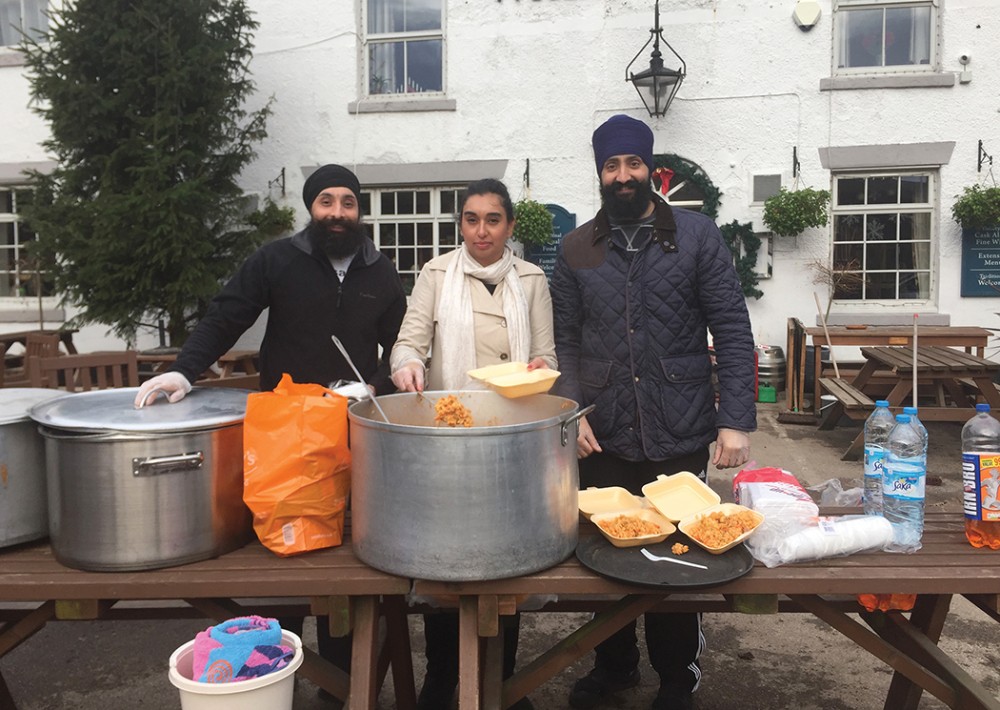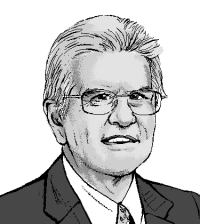Compassion in the church—and the mosque, and the temple
Christians organized the first relief agencies. Now Sikh, Muslim, and Buddhist groups abound.

All the major religions teach the virtues of charity and compassion, of almsgiving and generosity to the poor. Historically, however, Christianity was unique in developing institutional structures to organize tasks of charity and to make those agencies a central part of religious work. In modern times, that Christian precedent has been widely copied across the various faith traditions, transforming concepts of religious duty and humanitarianism. We are living through a global revolution in practical compassion.
Christian encounters with other faiths developed during the great missionary era of the 19th and early 20th century and were reinforced by experiences of immigration in the second half of the 20th century. In both eras, members of other faiths were startled and later intrigued by the scale and sophistication of Christian charitable endeavors, which were so different from the unfocused efforts they already knew. Partly those other believers were concerned about preventing Christian expansion in their homelands, but many were excited by the practical opportunities they saw opening before them. Immigrants of non-Christian faiths who grew up in traditionally Christian societies saw the work of such agencies as a natural aspect of religious life and assumed that their own faiths would adopt the same kind of mass voluntarism.
Read our latest issue or browse back issues.
Just how similarly the different religions came to view charitable activities was evident following the catastrophic fire that overwhelmed the Grenfell Tower block in London in 2017, killing over 70 people and leaving many homeless. The local government response to the humanitarian crisis was inadequate, leaving relief to the different faith groups, which performed splendidly. As in any crisis or disaster in modern Britain, victims and first responders of any faith knew they could rely on the Sikh charity Khalsa Aid for hot meals, served with love and care (and with serious attention to the dietary concerns of all recipients). Local churches, Pentecostal and Anglican, were deeply involved in short- and long-term relief activities. But the main center of the relief effort was the local mosque, which offered food, clothing, and temporary housing. Mosques and churches became donation centers for food and supplies of all kinds, overnight assuming the role of central warehouses.
The rise of Islamic charities has been a significant religious story in modern Britain. This has been particularly important as government reductions in social services have vastly increased the number of people in urgent need of food, clothing, and shelter. Beyond operating soup kitchens, often in collaboration with churches, Islamic charities help homeless people, regardless of religion. Although obviously not celebrating Christmas, these charities commonly use the traditions of that time of year to raise funds and to provide food and warmth for the needy. Christmas, in a sense, has become the focus of the interfaith charitable year.
Obviously, I am not claiming that such generous impulses are the preserve of any faith but rather that Christians developed the institutional structures and the voluntary principle. This influence is clear in one Chinese instance. When Christian missionaries arrived in coastal China, they brought with them Anglo-American models of charitable organization. These models bemused local Buddhists, but some were troubled by taunts about their own lack of outreach and of practical compassion. That inspired Buddhist activists, notably Taixu (1890–1947), whose profound admiration for Christian charitable efforts led him to found the school of Humanistic Buddhism, aimed at improving the human condition in the present life. (He was less impressed by Christian theology.) That movement has grown explosively in modern times, especially in Taiwan.
Its best-known modern-day exponent is the nun known as Master Cheng Yen, who deserves to be much better known as a leading figure in contemporary religion. Born in Taiwan in 1937, Cheng Yen made it her life’s work to create a Buddhist NGO at least comparable to Christian agencies. The result is Tzu Chi—the Buddhist Compassion Relief Tzu Chi Foundation, founded in 1966—which is sometimes called the Buddhist Salvation Army.
Tzu Chi has 10 million members and operates in 47 countries, focusing on disaster relief, medical aid, and community service. Volunteers are strictly forbidden to use their work to evangelize or to discuss religion. Tzu Chi workers have recently been in evidence in the United States following Hurricane Harvey in Houston and the fires in Northern California. Apart from conventional aid, they offer cash cards to help tide people over in periods of dislocation and unemployment. When volunteers offer aid to a person, they are expected to bow to the recipient to offer their thanks for the opportunity to do good.
If the ideas underlying such a relief agency were originally Christian, they have now been thoroughly appropriated and absorbed, and they have come home to the United States. Let’s hope the religions of the world will continue to find fruitful ways of borrowing practical ideas from each other.
A version of this article appears in the print edition under the title “Compassion gets organized.”






